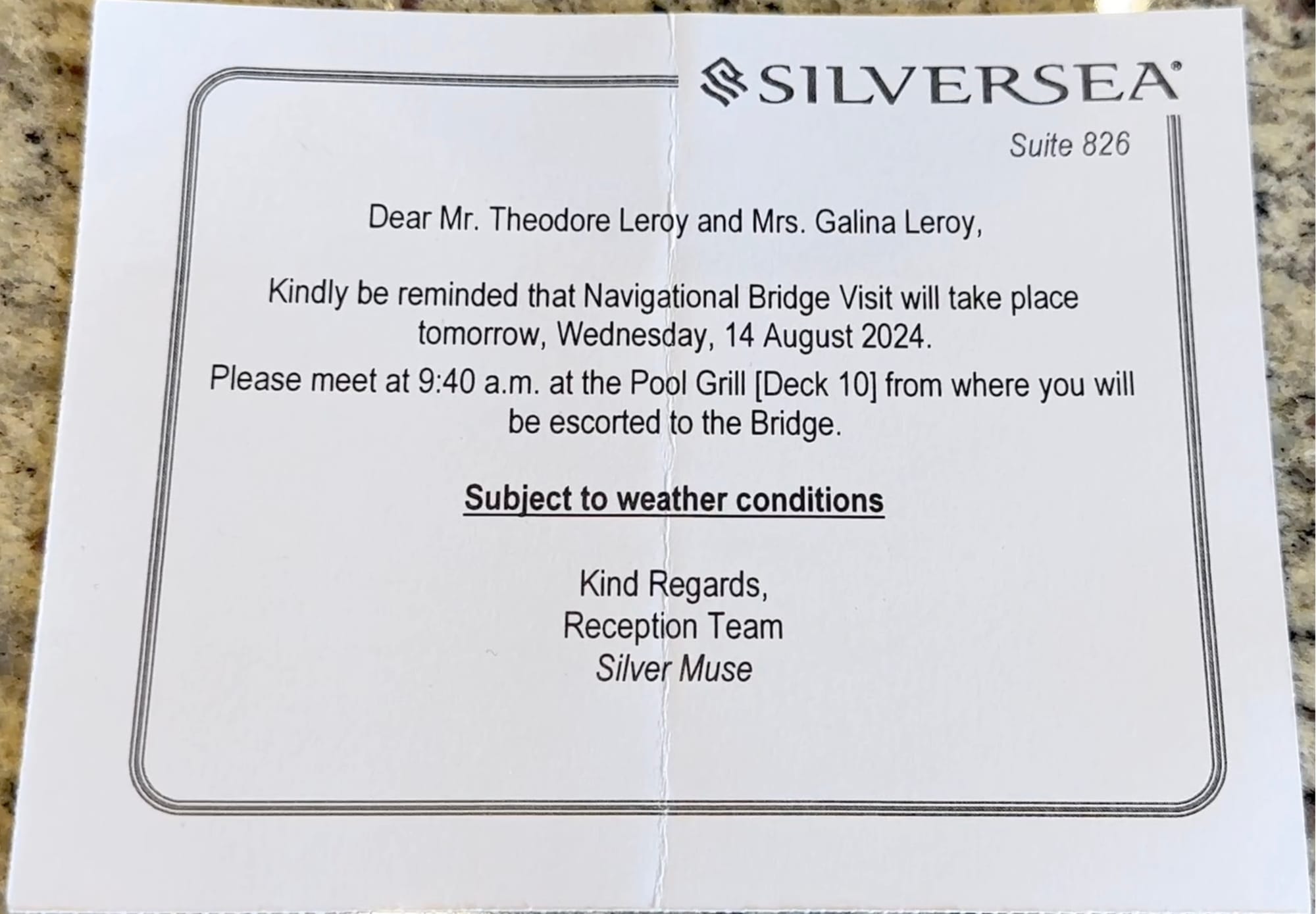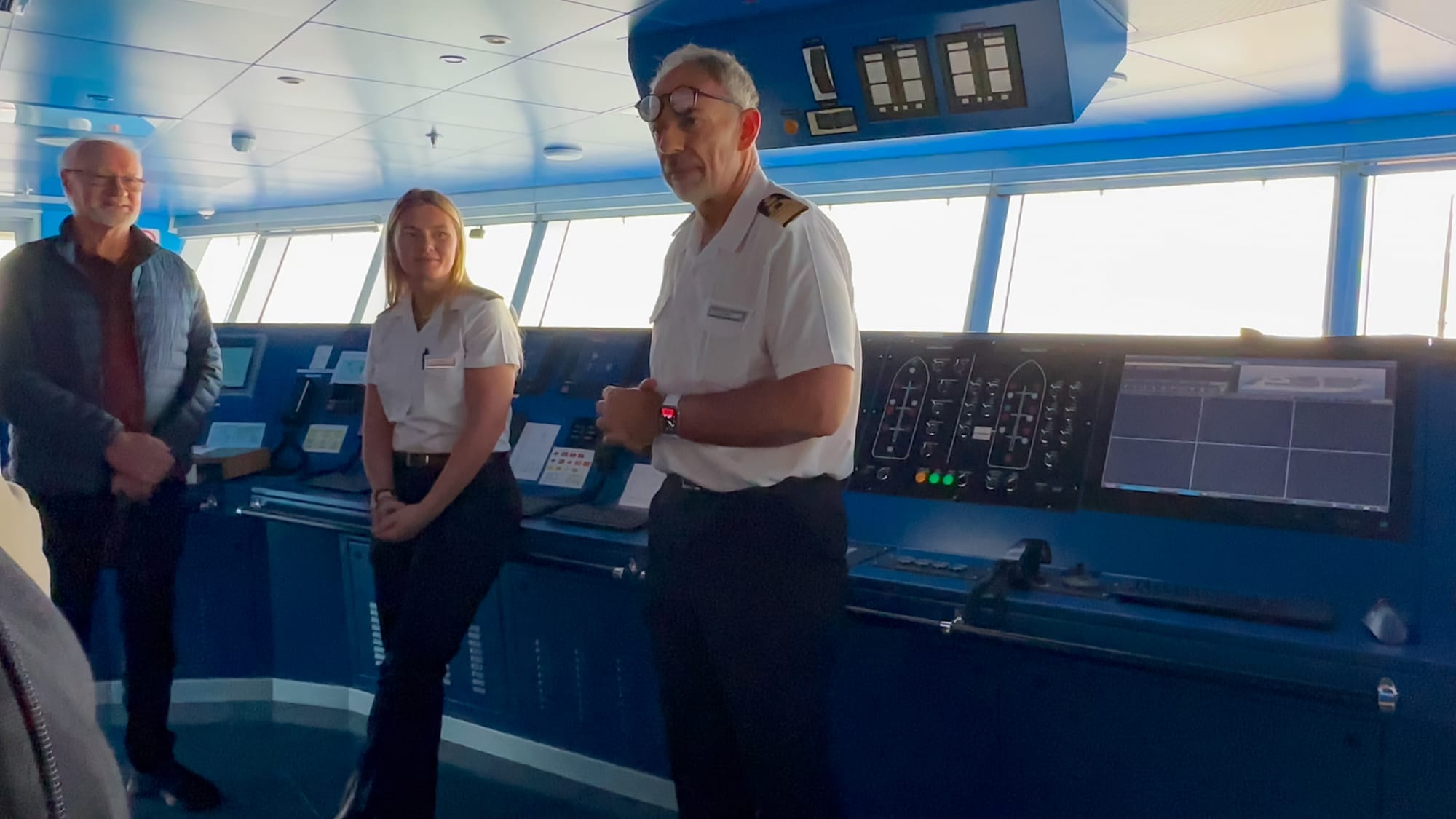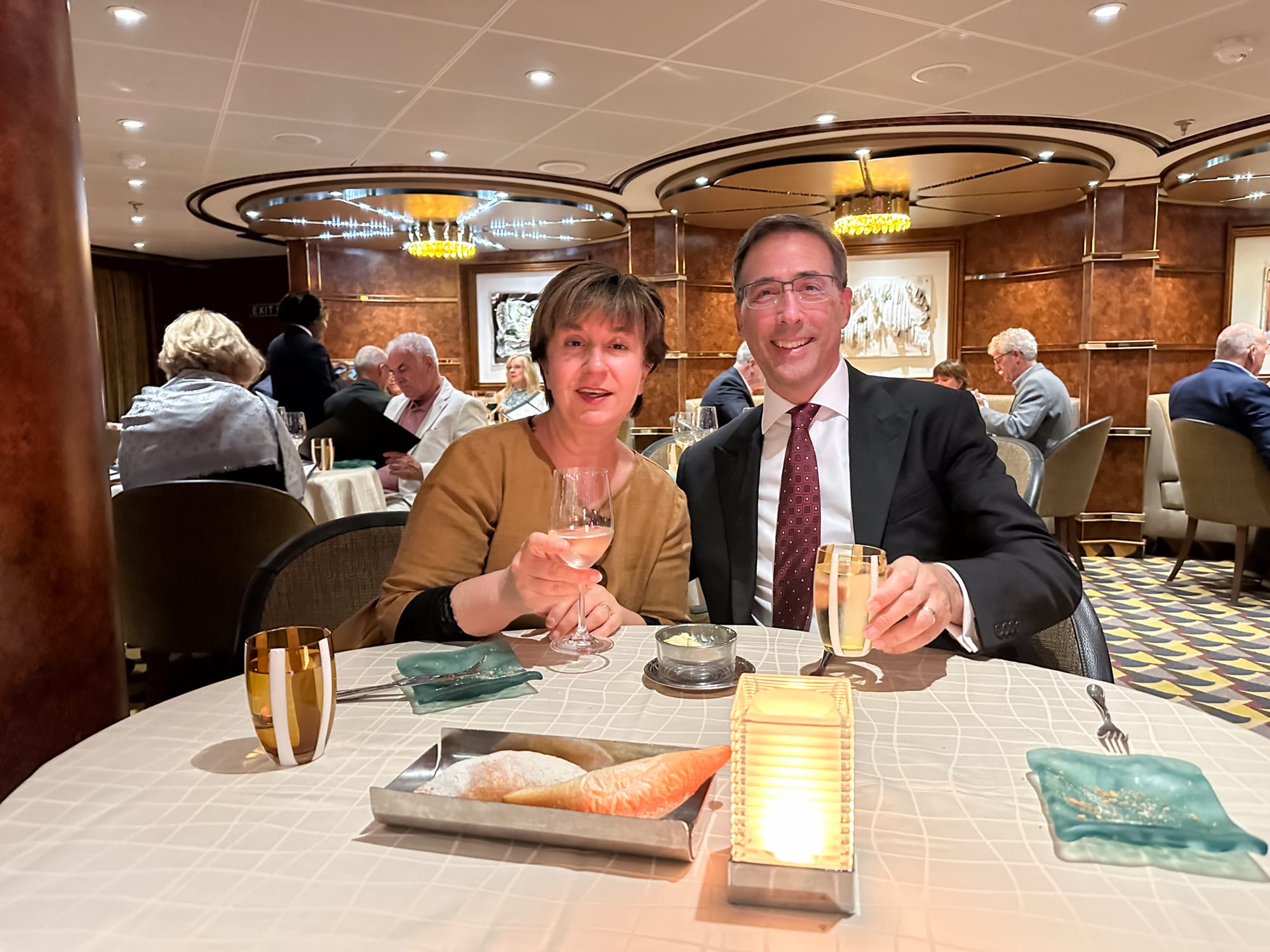Alaska 2024 - Day 6 Inside Passage

14 August 2024
No map today, but a photo from our journey through the Inside Passage. The map will be back when we reach our next port.
This was an at sea day, while transiting from Wrangell to Vancouver, British Columbia, Canada. The passengers and the crew were able to settle into a bit of an at sea routine.
Our real highlight of the day was a bridge tour!

The invitation was left in our room for us on the evening of 13 August, so we knew well ahead of time and could be prepared. If a bridge tour is of interest, you just go to the Reception Desk on deck 5 and ask to be added to the list of guests who want to go on a bridge tour. They'll add you to the list and you'll be notified ahead of time if you're able to go on the tour.
We headed up to deck 10 to the Pool Grill at about 9:30 and waited for a crew member to gather us up and guide us to the bridge. There were about twelve of us.
The crew member came and explained the rules.
- Don't touch anything!
- Minimal talking unless asking questions and keep our voices down.
- No photo of video photography unless specifically permitted by the Captain.
The crew member guided us up through the passageways serving some suites on deck 10 to a locked door. The crew member unlocked the door for us and escorted us onto the bridge.
The Captain introduced himself, then turned the tour over to Tawani, his Bridge Officer candidate and left to take care of some Captain stuff. The Captain was going to be departing the ship on 15 August and a different Captain was going to take over in Vancouver.

The bridge is very highly automated. The ship is on auto-pilot most of the time. There are alarms and sensors throughout the ship, and all signals are sent to the bridge where they are monitored.
Galina, ever the take charge sort of person, tried on a Captains hat.

There is typically only one person on bridge watch at a time. This was quite surprising for me to hear as a retired U.S. Navy sailor. I was Command Duty Officer qualified on shore duty, and was never bridge qualified on a ship, but I believe there would typically be no less than 5 people on bridge watch for a Navy vessel at sea.
The ship had active, deployable stabilizers that could be extended to reduce wave action in heavy seas making the ride through the ocean more comfortable. The could not be extended in shallow water or when there were whales in the vicinity. An impact with a whale could injure the animal and damage the stabilizers.
The stabilizers move in response to the wave action and the motion of the ship. They attempt to counter some of the motion with a desired effect that seems conceptually similar to noise cancelling headphones. If the ship is rolling to starboard (the left), the starboard stabilizer will try to push the ship to port and the port stabilizer will also try to pull the ship to port.
It seemed to work quite well, although I did feel some minor oscillations sometimes, and wondered if the stabilizers might not fight on another at certain wave frequencies. Like a harmonic maybe?
The ship also has three thrusters for lateral movement. There are two near the bow and one near the stern. These are holes through the hull with impellers that impose lateral thrust on the ship. They allow the ship to pull into and out of port on its own power, without the need for tug boats or support vessels.
The tour was friendly, fun, and informative.
Of course, the transit itself held some wonderful views.


Seas were quite calm for the transit and once it was dark there wasn't much to see. We had dinner at the Silver Note, then retired to our cabin to prepare for our visit to Vancouver.

